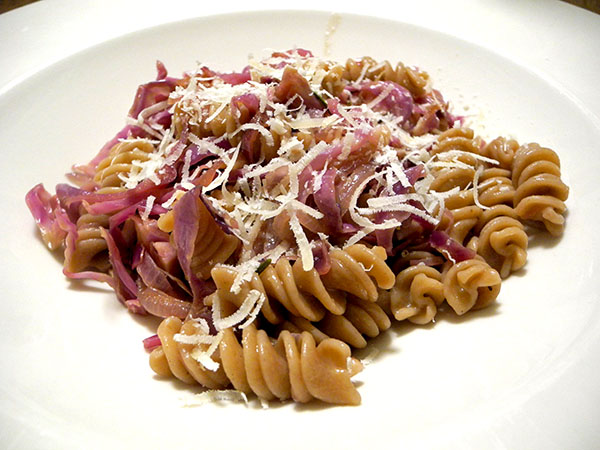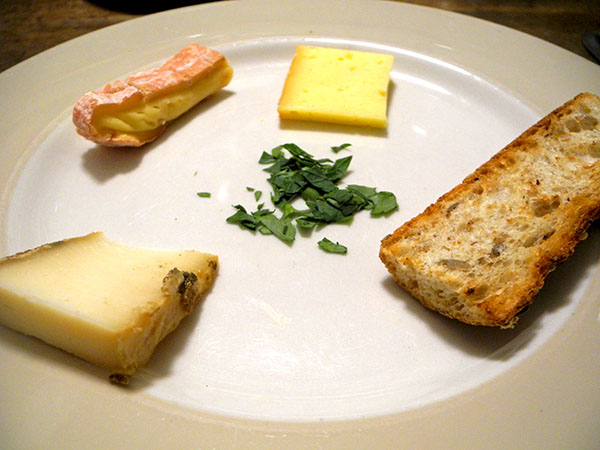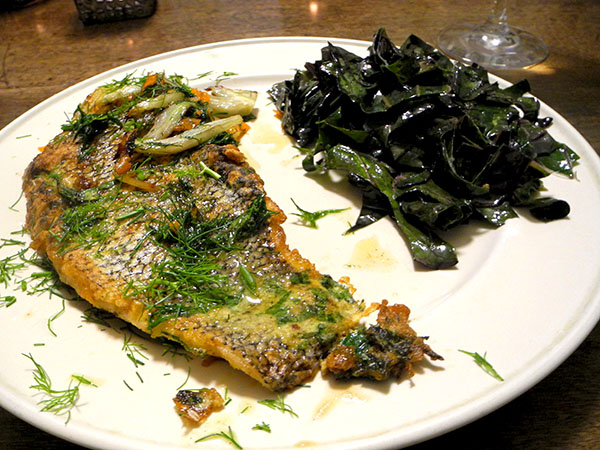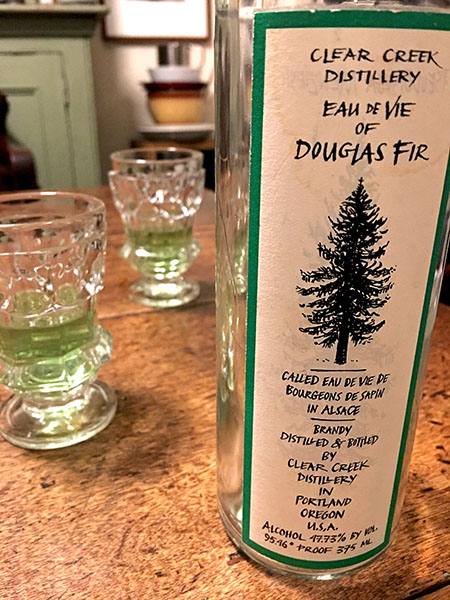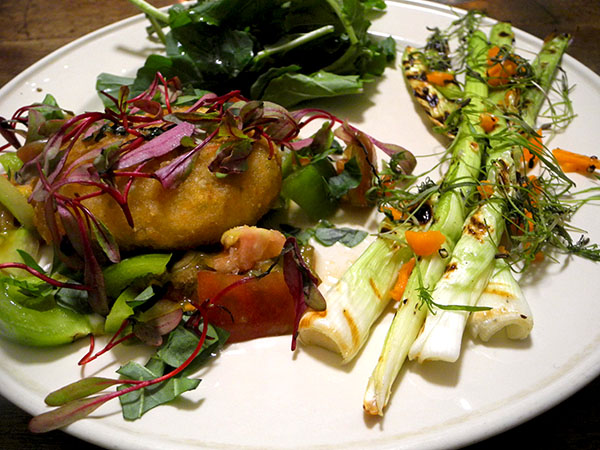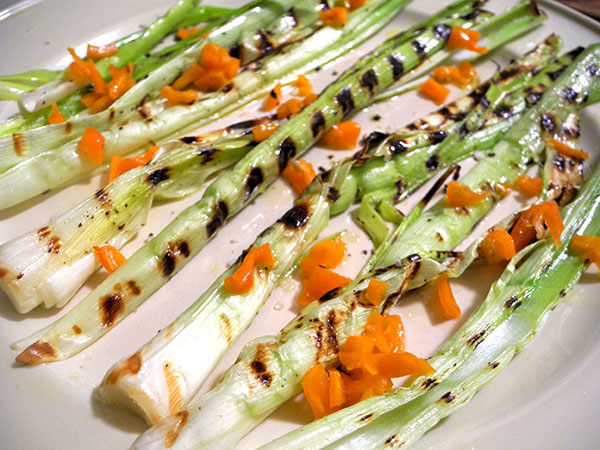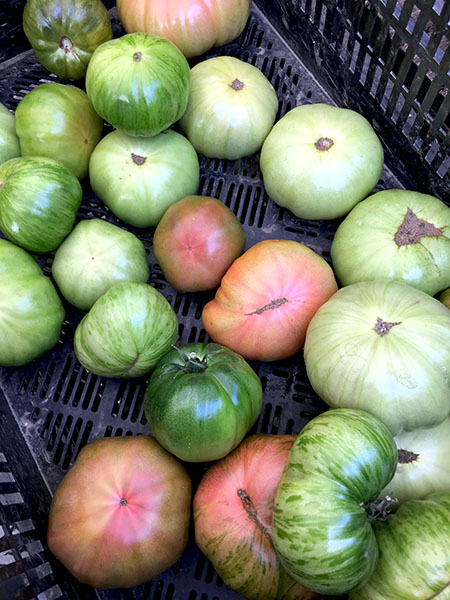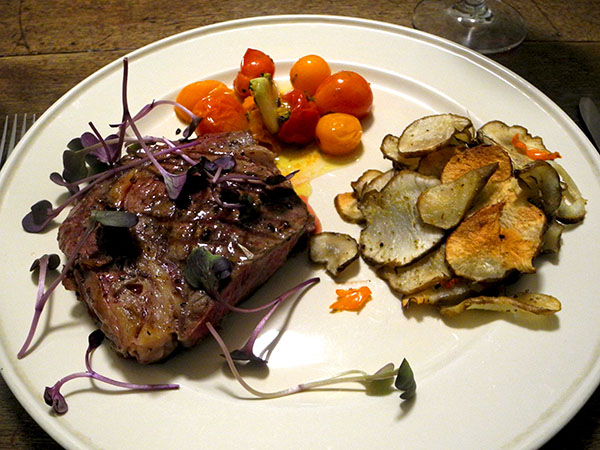
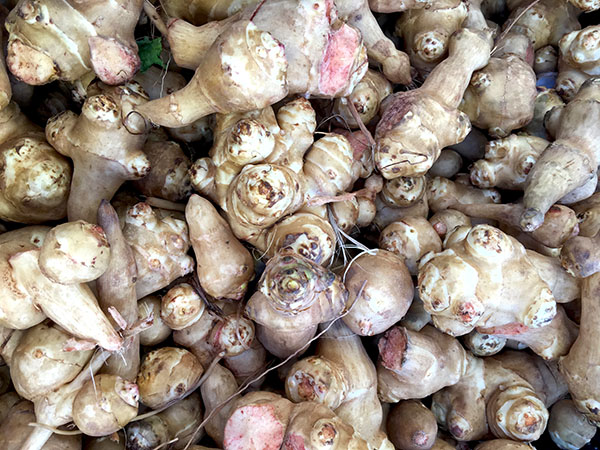

I routinely forget how delicious, and easy to prepare, sunchokes are. While my neglect of this wonderful native American vegetable may have something to do with a residual conservatism about food sources, helianthus tuberosus not having any place in my understanding of the European kitchen, the original inspiration for these meals, it may be that it was the sometime name, ‘Jerusalem artichoke’, because it had seemed bogus to me for so long, that has been responsible for my overlooking their unique pleasures.
- one 18-ounce Delmonico steak from Millport Dairy Farm, dried, pan-grilled to medium rare, divided into 2 pieces, drizzled on the plates with a squeeze of local lemon [sic!] from Fantastic Gardens of Long Island and a little olive oil, finished with a sprinkling of purple micro radish from Windfall Farms
- a mix of sun gold tomatoes from Stokes Farm and varicolored cherry tomatoes from Norwich Meadows Farm, slow-roasted with a generous amount of dried Italian oregano from Buon Italia, olive oil, and a large garlic clove from Stokes Farm, halved
- sunchokes (about 12 ounces), their small ‘rootlings’ removed, trimmed, scrubbed, sliced very thinly (1/8 inch, but they probably didn’t have to be that thin), tossed with barely a tablespoon of olive oil (I think the small amount is somewhat critical to ensuring maximum crispiness), sea salt, and freshly-ground pepper, spread in one layer onto 2 Pampered Chef unglazed ceramic pans (a single pan wasn’t enough, since they had been cut so thinly and should show a lot of surface), sprinkled with thin slices of 2 small sliced [formerly green onions, or fresh white onions, seen in the picture above] from Berried Treasures, roasted at 425º for about 35 minutes, chopped habanada tossed on the tubers near the end (they could be heated a little first), or until they were brown, tender, and crispy on the edges, then dusted with dried fennel pollen from Buon Italia, and shuffled around in the pans with a wooden spatula
- the wine was a California (Napa) red, Ken Deis Napa Valley Merlot 2015
- the music was Beethoven’s ‘Fidelio’, Colin Davis conducting the Bavarian Radio Symphony Orchestra and the Bavarian Radio Chorus, with Ben Heppner, Deborah Voigt, Matthias Hölle, Günter von Kannen, Thomas Quasthoff, Michael Schade, Elizabeth Norberg-Schulz, Andreas Schulist, Wilfried Vorwold, et al.


